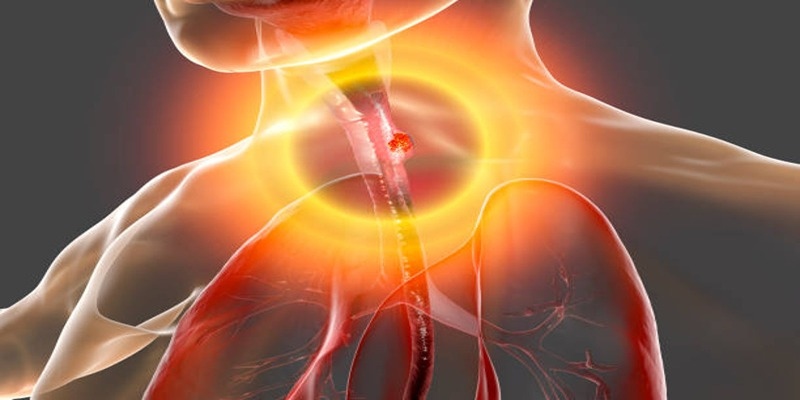Unveiling the Signs and Symptoms of Sciatica: An In-Depth Guide
Oct 13, 2023 By Nancy Miller
Sciatica is a prevalent condition impacting millions of individuals globally. It involves pain that follows the trajectory of the sciatic nerve, which extends from the lower back, through the hips, and down each leg. Typically, the pain affects only one side of the body. The sciatic nerve is the longest and widest nerve in the body, and sciatica occurs when this nerve is irritated or compressed. Common causes of sciatica include herniated discs, bone spurs on the spine, spinal stenosis (narrowing of the spine), and, less frequently, tumors or injury. Individuals who lead sedentary lifestyles, are overweight, or perform heavy lifting regularly are at higher risk of developing sciatica.
Causes of Sciatica
Herniated Discs:
A herniated disc is when one of the pads between vertebrae in the spine becomes displaced and consequently presses on the sciatic nerve. This can cause pain, numbness, and tingling along the course of the nerve.
- A Herniated Disc Also known as a Slipped or Ruptured Disc, often results from age-related wear and tear called disc degeneration. As we age, our spinal discs lose some of their water content, making them less flexible and more susceptible to tearing or rupturing with even a minor strain or twist.
Spinal Stenosis:

This refers which puts pressure on the nerve roots. Spinal stenosis is a condition primarily affecting older adults, usually as a result of degenerative changes in the spine. The spinal canal, which houses the spinal cord and nerve roots, gradually becomes narrower due to factors such as;
- Bone Spurs.
- Bulging Discs.
- Thickened Ligaments.
Spinal stenosis can occur anywhere along the spine, it is most common in the lumbar region (lower back), where it can lead to sciatica. It's important to seek medical attention if you experience symptoms consistent with spinal stenosis, as early intervention can help manage symptoms and improve quality of life.
Piriformis Syndrome:
Piriformis syndrome is a neuromuscular disorder caused by the compression of the sciatic nerve by the piriformis muscle, which is located deep in the buttocks. This condition can cause pain and numbness that radiates from the lower back down to the feet. It's more common in women than men, especially those who are active or have jobs involving repetitive motions.
The most common cause of piriformis syndrome is Tightness in the Muscle due to overuse or strain, such as from running or sitting for extended periods. Other factors that can contribute to the condition include underlying medical conditions such as;
- Arthritis.
- Obesity.
- Sciatic Nerve Injury.
- Diabetes.
Common Signs and Symptoms

Radiating Pain in the Lower Back and Leg:
- Buttocks.
- Thighs.
- Legs.
The pain can vary in intensity and may worsen with prolonged sitting, standing, or walking.These sensations of numbness and tingling are often described as feeling like a limb 'falling asleep'. They can extend from the lower back and travel down to the leg, following the path of the sciatic nerve.These symptoms may be intermittent, or persist continuously, and can be worsened by specific movements or activities like sitting for a prolonged period or straining the back. They can also occur independently, or coexist with other symptoms such as pain or weakness in the affected leg.Understanding and recognizing these symptoms is crucial, as they may indicate the severity of nerve compression and the extent of the underlying condition.
Muscle Weakness:
Muscle weakness, or a decrease in muscle strength, is a common symptom that can occur due to sciatica. It has a direct correlation with the degree of nerve compression and can significantly affect a person's quality of life. The weakness typically appears on the same side as the leg affected by the sciatic pain.
Sciatica-related muscle weakness can manifest in various ways. For example, an individual may struggle with tasks such as;
- Lifting Objects.
- Walking.
- Climbing Stairs.
The weakness occurs because the compressed sciatic nerve is unable to effectively transmit signals from the brain to the muscles in the affected leg. This disruption in nerve signals leads to a decline in the muscle's ability to contract and function properly.
Conclusion
Early diagnosis and appropriate treatment are crucial for effectively managing sciatica. If you experience persistent lower back pain, leg pain, or any of the other mentioned signs and symptoms, it is important to consult a healthcare professional. They can provide an accurate diagnosis and create a personalized treatment plan to help alleviate your sciatica symptoms. Remember, taking proactive steps toward understanding and managing your sciatica can significantly improve your quality of life.
-
 Aug 01, 2024
Aug 01, 2024Using Kojic Acid Soap for Dark Spots
Learn how to use kojic acid soap effectively to reduce dark spots and acne for clearer skin.
-
 Oct 18, 2023
Oct 18, 2023Esophageal Cancer: Understanding its Signs and Symptoms
Explore this comprehensive guide covering everything you need to know about esophageal cancer - its types, causes, signs, diagnoses, treatments, prevention, and management.
-
 Jul 09, 2024
Jul 09, 2024Natural vs. Refined Sugars: What You Need to Know
Discover the difference between natural and refined sugars, their health impacts, and practical tips for reducing refined sugar intake for a healthier lifestyle.
-
 Aug 02, 2024
Aug 02, 2024Natural Ways to Reduce Spider Veins
Discover natural remedies to effectively get rid of spider veins and improve your skin's appearance.
